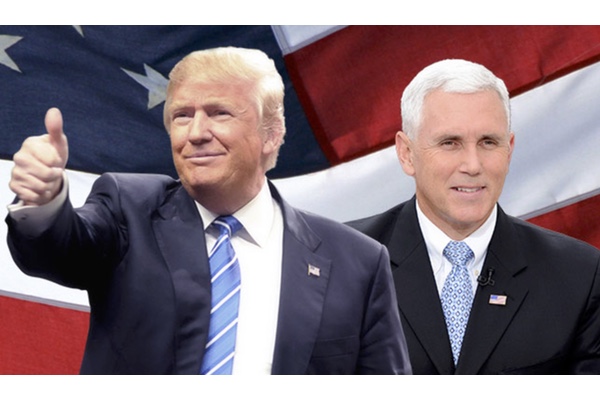Why Have There Been So Many Vice Presidential Candidates from Indiana of All Places?

The pairing of New York’s Donald Trump and Indiana’s Mike Pence on the 2016 Republican ticket revived an often successful political strategy that once was common in American history. From the end of the Civil War until World War I, New York and Indiana were the two key swing states in presidential elections. The party that won them usually won the White House. As a result, in elections between 1876 and 1916, party tickets consisting of New Yorkers and Hoosiers were common.
The first such ticket was offered in 1876 by the Democrats, who chose Indiana’s Thomas Hendricks as vice president to run with New York’s Samuel Tilden. In that era, presidential nominees had little or no influence in selecting running mates and the conventions made the choice. The two men differed on the key monetary issue of the day. Tilden, a Wall Street lawyer, favored “hard money” and restricting the money supply, a position favored in the East. Hendricks was a leader of the “soft money” greenback movement that was popular in the South and Midwest. It was hoped that the pairing would keep supporters on both sides of the issue in the Democratic column and it worked, to a degree. Democrats won both New York and Indiana, and won the popular vote nationwide but, like the 2016 Democratic ticket, lost the election in the Electoral College. Republican Rutherford Hayes of Ohio, and his running mate, William Wheeler of New York, won a controversial victory there by one electoral vote.
The next New York/Indiana combination fared better. In 1884, Grover Cleveland of New York was a fresh face running on an anti-corruption platform. After six straight presidential election losses, Democrats hoped that he would lead them out of the political wilderness and back to the White House. The Democratic convention again chose Indiana’s Hendricks for vice president. He helped the party carry Indiana, but New York was a squeaker. Cleveland won his home state by just over 1,000 votes and, with it, the presidency. Without New York, the Democrats would have again, as in 1876, won the popular vote, but lost the Electoral College, and the Republican nominee, James Blaine of Maine, would have been president. Alas for Hendricks, his time as vice president was short. He died eight months into his term.
In 1888, it was the Republicans who capitalized on the Indiana/New York alignment. That year, Benjamin Harrison of Indiana headed the GOP ticket. The convention chose Levi Morton, a wealthy New York banker, as his running mate. They ran as Washington outsiders against the incumbent Democratic president, Cleveland, and his new running mate, Allen Thurman of Ohio. By winning both Indiana and New York, Republicans won back the White House. In a repeat of 1876, they lost the national popular vote, but won the Electoral College.
In the early twentieth century, Indiana’s Charles Fairbanks, a Republican, reprised Hendricks’s role of a generation earlier—he was chosen as vice president on tickets with two different presidential nominees from New York. In 1904, Fairbanks was the bottom half of the winning Republican ticket headed by New Yorker Theodore Roosevelt. Twelve years later, in 1916, the Republican convention again turned to Fairbanks for the second spot on the party’s ticket, pairing him with Charles Evans Hughes, a Supreme Court justice from New York. Fairbanks was not so fortunate this time. He and Hughes lost to the incumbent Democratic president, Woodrow Wilson from New Jersey, and his running mate, Thomas Marshall who, like Fairbanks, was from Indiana.
Times have changed. New York and Indiana are no longer battleground states in presidential elections but, with the upcoming inauguration of Donald Trump as president and Mike Pence as vice president, the 2016 election shows that pairing candidates from the Empire State and the Hoosier State on a party’s ticket can still be a winning combination.